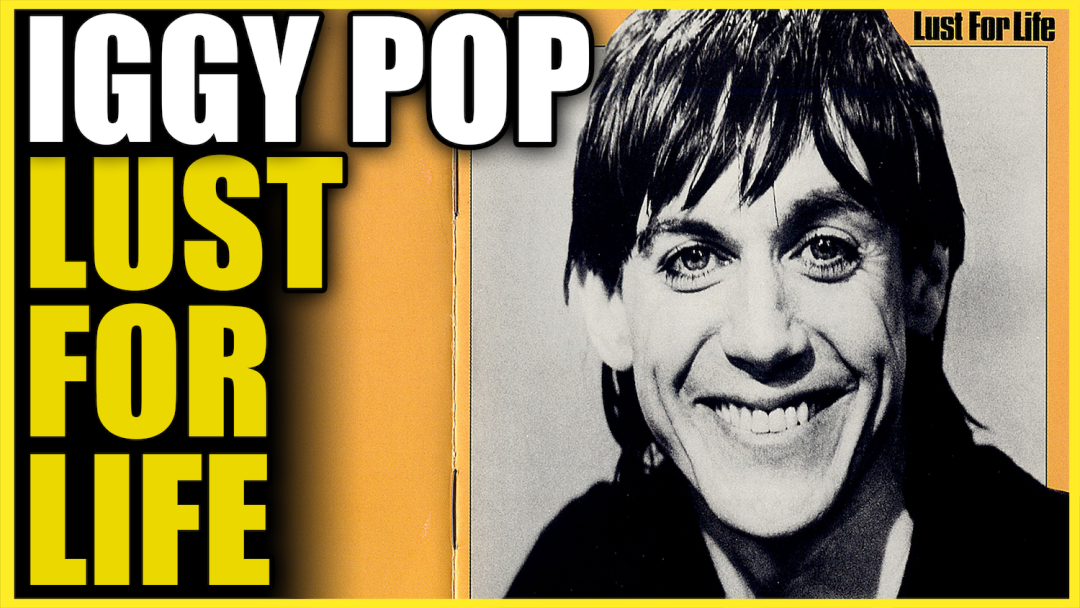From a simple recording of David Bowie on the Ukulele, “Lust for Life” was extrapolated into the instantly-recognizable song we know today. Rolling Stone placed it in The 500 Greatest Songs of All Time in 2004—and yet again in 2021—when the list was re-evaluated and re-ranked.
Bowie initially derived the beat from a TV program, the iconic rhythm played by drummer Hunt Sales. Nonetheless, the song continues to enjoy prominent use in popular media today, with placements ranging anywhere from movies to videogames, and has inspired the drum patterns of many charting tracks since.
James Newell Osterberg Jr. had a pulsating career with his protopunk band ever since its formation in 1967. Multiple reincarnations would assemble and disband under names like The Stooges and Iggy and the Stooges. In 1977, during the band’s second hiatus, he released work under his solo title, simply: Iggy Pop.
Close friend, David Bowie, played a significant role in his professional career. The pair shared an influential and inspirational relationship that went both ways between the two artists. It was at this time that the two moved to West Berlin, each attempting to curb their drug habits. Iggy stayed in Bowie’s apartment, among other friends of the English rock star. It was in this mundane environment — sitting on the floor, watching TV — that the song hatched.
Iggy recalled, “we had one television show a week in english. It came on the Armed Forces Network, and the American Forces had a logo, like other brands do. It was a cartoon of a Radio Tower, and the tower went ‘beep beep beep, beep beep be-beep… beep beep beep, beep beep be-beep’ and [Bowie] just picked up the ukulele and said ‘record this,’ and he just started playing the changes, and went through the changes, and then he said ‘call that Lust for Life’.” Iggy recorded that short demo on a small, “25 dollar” Phillips Mono Tape Recorder, and the rest is history.
The “Lust for Life” album and its title song were recorded at Hansa Studio in West Berlin. It featured Iggy on vocals, David Bowie on piano and backing vocals, Ricky Gardiner on guitar, Tony Sales on bass guitar and backing vocals, and Hunt Sales on drums and backing vocals. Hunt credits inspiration from both George of the Jungle (the tv show) and The Supremes’ “You Can’t Hurry Love.”
While the production was spearheaded by Bowie and the Sales brothers, the lyrics are classic Iggy. Among the chaotic, drug-related, and provocative phrases are several references to The Ticket That Exploded, by William S. Burroughs. The novel contributes many peculiar concepts and characters to Iggy’s lyrical choices, including “hypnotizing chickens” and “Johnny Yen”; who – for the record – is described by Burroughs as, “The Boy-Girl Other Half strip tease God of sexual frustration.”
Released with the album on September 9,1977, the song went to Number 3 on the Dutch Top 40. The popular Dutch TV show, TopPop, aired a live performance, displaying a shirtless Iggy as he leveled the stage scenery and decorations.
“Lust for Life” and its covers have been featured in Trainspotting, Reload, Rugrats Go Wild, The Simpsons, Just Like Heaven, and a number of commercials. So much so, that The Onion documented the phenomena in its satirical article “Song About Heroin Used to Advertise Bank”
“Lust for Life” and its iconic, driving drum sound has been mirrored decades later in works like Travis’ “Selfish Jean” and Jet’s “Are You Gonna Be My Girl;” an illustration of musical ideas perpetuating their influence through the decades.
